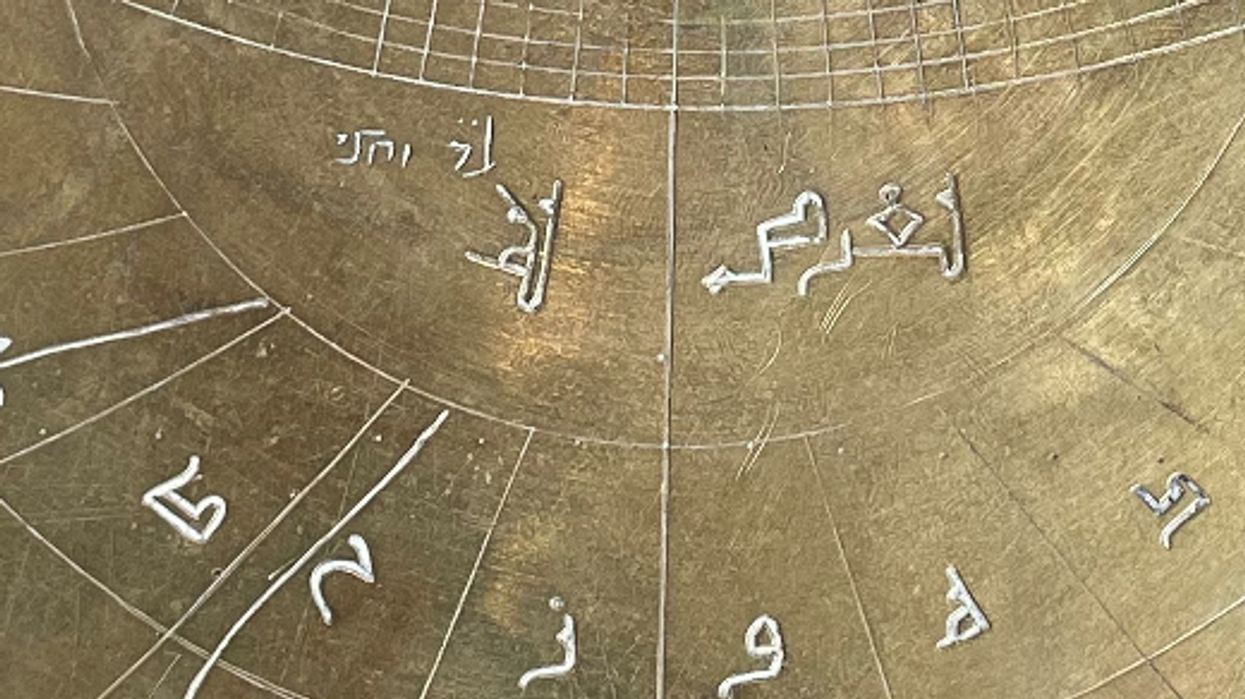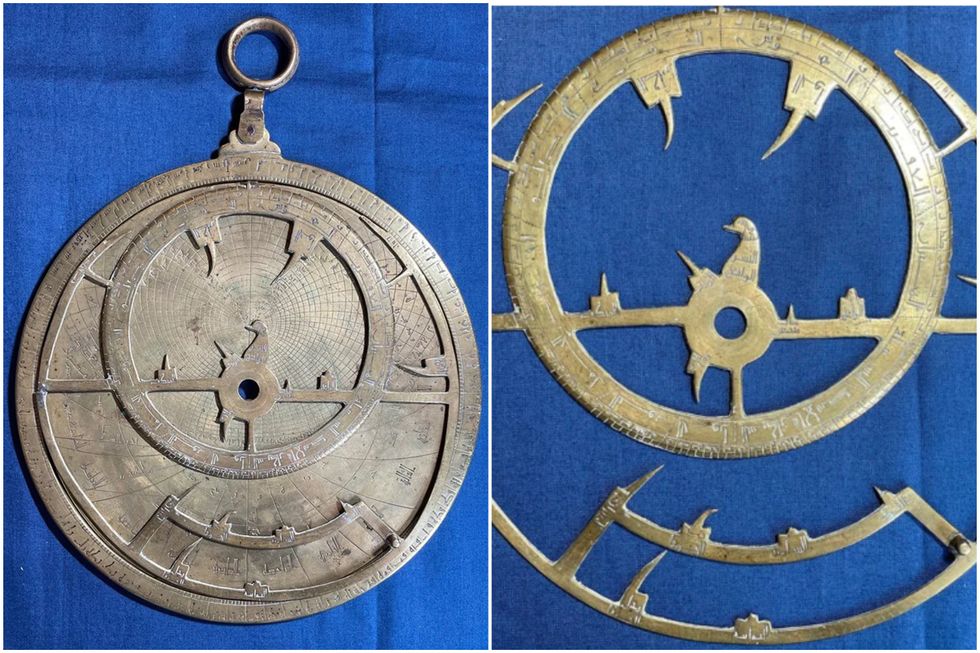Harriet Brewis
Mar 05, 2024

The 11th Century astrolabe was used like a handheld computer
(Federica Gigante/University of Cambridge)
It may not have speakers or a Bluetooth connection, but experts have discovered the world’s first smartphone which dates back 1,000 years.
The instrument, called an astrolabe, was found by chance by University of Cambridge research associate, Dr Federica Gigante.
She stumbled across an image of the 11th Century artefact on the website for a museum in Verona, Italy.
Intrigued, she contacted the Fondazione Museo Miniscalchi-Erizzo about it, but staff had no idea of the piece’s significance.
“The museum didn’t know what it was,” Dr Gigante said in a statement. “It’s now the single most important object in their collection.”
She continued: “When I visited the museum and studied the astrolabe up close, I noticed that not only was it covered in beautifully engraved Arabic inscriptions but that I could see faint inscriptions in Hebrew.
“I could only make them out in the raking light entering from a window. I thought I might be dreaming but I kept seeing more and more. It was very exciting.
“This isn’t just an incredibly rare object. It’s a powerful record of scientific exchange between Arabs, Jews and Christians over hundreds of years.”

According to historian Tom Almeroth-Williams, astrolabes were the world’s first smartphone.
In a piece published on the Cambridge University website, he explained that these complex star charts served as “a portable computer which could be put to hundreds of uses”.
“They provided a portable two-dimensional model of the universe fitting in their user’s hand, enabling them to calculate time, distances, plot the position of the stars and even forecast the future, by casting a horoscope."
In other words, they really were the “world’s first smartphone,” he said.
The astrolabe identified by Dr Gigante is only one of a handful of such instruments known in the world, and it is one of the oldest examples ever discovered.
Over the centuries, it was adapted, translated and corrected by Muslim, Jewish and Christian users in Spain, North Africa and Italy.
“The Verona astrolabe underwent many modifications, additions, and adaptations as it changed hands,” Dr Gigante said.
“At least three separate users felt the need to add translations and corrections to this object, two using Hebrew and one using a Western language.”

Thanks to key scientific, design, construction and calligraphic characteristics, the Cambridge research associate was able to date and locate the creation of the so-called Verona Astrolabe.
She worked out that the object originally came from Andalusia and, based on the style of the engraving and arrangement of the scales on the back, matched it to instruments made in Al-Andalus – the Muslim-ruled region of Spain.
Dr Gigante believes that the astrolabe might have been made in the ancient city of Toledo at a time when it was a thriving hub of cultural exchange between Muslims, Jews and Christians.
The astrolabe features Muslim prayer lines and prayer names, arranged to ensure that its original users performed their daily prayers on time, Almeroth-Williams notes.
It also features a signature which includes two likely Jewish names written in Arabic script – this suggests that, at one point, it circulated within a Sephardi Jewish community in Spain, where Arabic was the spoken language.
A plate features inscriptions of North African latitudes, implying that at another point it ended up in Morocco or Egypt.
Furthermore, the astrolabe also features corrections inscribed in Western Numerals – the same that we use today.

The astrolabe’s plates feature lightly scratched markings in Western numerals, translating and correcting the latitude values, some even multiple times.
Dr Gigante thinks these additions were probably made in Verona for a Latin or Italian language speaker.
The remarkable instrument is thought to have made its way into the collection of Veronese nobleman Ludovico Moscardo (1611–81) before being passed, by marriage, to the Miniscalchi family.
In 1990, the family founded the Fondazione Museo Miniscalchi-Erizzo to preserve their collections. Hence, the astrolabe’s final resting place.
Dr Gigante pointed out that the astronomical tool was a symbol of collective history.
“This object is Islamic, Jewish and European,” she said.
“They can’t be separated.”
Sign up for our free Indy100 weekly newsletter
Have your say in our news democracy. Click the upvote icon at the top of the page to help raise this article through the indy100 rankings
Top 100
The Conversation (0)













